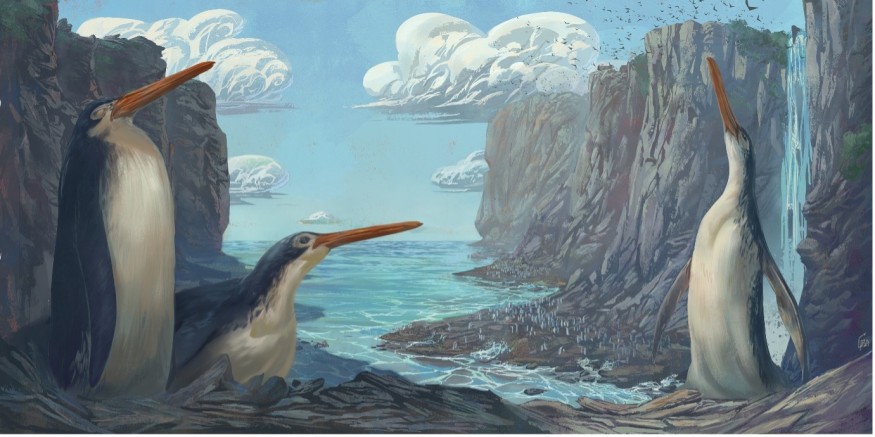A giant fossilized penguin discovered by Hamilton school children in Waikato has been revealed as a new species by researchers from Massey University.
Back in 2006, a group of school children was on a Hamilton Junior Naturalist Club (JUNATS) fossil hunting activity as a part of their field trip. They were led by the club's fossil expert Chris Templer and together, they discovered the remains of a giant fossilized penguin.
The confirmation that the discovered giant fossilized penguin is detailed in the report "A Giant Oligocene Fossil Penguin from the North Island of New Zealand," appearing in the latest Journal of Vertebrate Paleontology.

Ancient Penguins in New Zealand
Penguins are known to have a fossil record that reaches almost as far back as the time of the dinosaurs, and some of the oldest specimens found come from Aotearoa or New Zealand. Fossilized penguin remains from Zealandia (ancient Aotearoa) are mostly recovered from what is now Otago and Canterbury. However, there are also significant finds in the areas of Waikato and Taranaki.
To examine the 2006 discovery, a team of researchers from Massey University, together with colleagues from the Bruce Museum in Connecticut, United States, visited the Waikato Museum Te Whare Taonga o Waikato.
The team conducted 3D scans on the bones and compared the fossil to existing digital versions of fossilized penguin bones from around the world. By taking the 3D scans, the research team could recreate a 3D replica of the fossil for the Hamilton Junior naturalist. The actual fossil found in 2016 was donated by the Naturalist Club to the Waikato Museum in 2017.
The fossil was dated between 27.3 to 34.6 million years old, coming from a time when most of the Waikato was underwater, according to Dr. Daniel Thomas, Senior Lecturer from the Massey University School of Natural and Computational Sciences, in a university press release.
"The penguin is similar to the Kairuku giant penguins first described from Otago but has much longer legs, which the researchers used to name the penguin waewaeroa - Te reo Māori for 'long legs,'" explains Dr. Thomas. He explains that these longer legs made this penguin taller than other Kairuku specimens while it walked on land and that it might've affected how they swim or dive.
Uncovering the Fauna of Ancient Aotearoa
The new penguin species have been designated Kairuku waewaeroa, which Dr. Thomas explains as "emblematic for so many reasons." One is that it is proof that Zealandia shares incredible animal lineages that are much older than previously thought.
Also, the fact that the fossilized penguin was originally discovered by children exploring nature should remind us of encouraging future generations to become guardians of the environment.
"It was a rare privilege for the kids in our club to have the opportunity to discover and rescue this enormous fossil penguin," shares Hamilton Junior Naturalist Club President Mike Safey. "We always encourage young people to explore and enjoy the great outdoors. There's plenty of cool stuff out there just waiting to be discovered."
ALSO READ: The Story Behind Two Widowed Penguins of Melbourne Skyline
© 2025 NatureWorldNews.com All rights reserved. Do not reproduce without permission.





